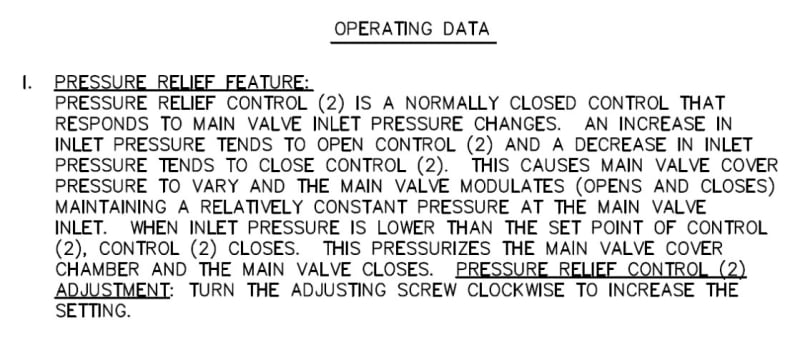sysengineer
Electrical
- Feb 16, 2012
- 56
I am trying to understand the operation of a regulating pressure relief valve on a fire pump.
The way I understand is that the valve starts to open when the pump discharge pressure rises above a set-pressure defined by the spring. When the demand changes on the system, i.e. when more deluge monitors open, the system pressure will likely drop below the pressure relief set-point at which point the valve will be closed and the system pressure will drop depending on the required flow through the system and the characteristics of the pump curve.
However I have found a statement from a valve manufacturer that seems to contradict my understanding; "it maintains constant system pressure at the pump discharge within very close limits as demands change." Found here.
How can it be possible to maintain constant discharge pressure when demand changes?
Thanks
The way I understand is that the valve starts to open when the pump discharge pressure rises above a set-pressure defined by the spring. When the demand changes on the system, i.e. when more deluge monitors open, the system pressure will likely drop below the pressure relief set-point at which point the valve will be closed and the system pressure will drop depending on the required flow through the system and the characteristics of the pump curve.
However I have found a statement from a valve manufacturer that seems to contradict my understanding; "it maintains constant system pressure at the pump discharge within very close limits as demands change." Found here.
How can it be possible to maintain constant discharge pressure when demand changes?
Thanks

